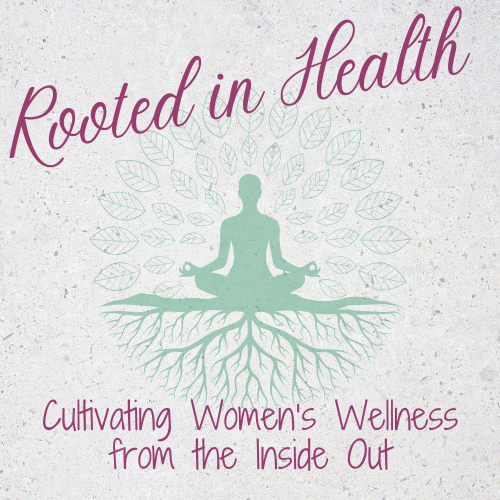Eating for Energy
The Truth About Food, Fatigue, and Feeling Like Yourself Again
Are you tired of being tired? Do you wake up exhausted, even after a full night's sleep? You're not alone – and here's the most important truth: you are not broken.
That pervasive fatigue, those brain fogs, and the feeling of constantly running on fumes are deeply connected to something often overlooked: how (and when) you eat. Your body is a symphony of intricate systems, and its energy levels are directly linked to its internal communication, from subtle blood sugar dips to significant hormone fluctuations.
The good news? This isn't about restriction or complicated diets. It's about understanding your body's language. With the right foods, eaten at the right time, you can quite literally feel the difference. Imagine waking up with genuine vitality, experiencing sustained clarity throughout your day, and feeling a deep sense of balance and stamina.
At Cultivated Health, we believe in empowering you to reclaim your energy and feel truly like yourself again. Let’s explore how to eat for energy, the Rooted In Health way.
1. Balance Blood Sugar First
Your energy is only as steady as your blood sugar. If you're eating high-carb meals without protein or fat, you're riding the energy rollercoaster. The ups feel great...until the crash.
Try this instead:
Build your plate with PFF: Protein, Fat, and Fiber.
Add slow carbs like squash, root vegetables, or berries instead of bread or pasta.
Avoid naked carbs—if you eat fruit, pair it with nut butter or seeds.
💡 Pro Tip: Start your day with a savory breakfast to avoid the mid-morning crash.
2. Don’t Fear Fat—Use It Wisely
Healthy fats are your friend. They help stabilize blood sugar, keep hormones humming, and give your brain the nourishment it needs.
Reach for:
Avocados, olives, and coconut
Pasture-raised eggs and grass-fed ghee
Flax, chia, and hemp seeds
💡 Reminder: Fat doesn’t make you fat. Blood sugar spikes and inflammation do.
2. Cycle Your Carbs with Your Cycle
For women with fluctuating hormones, when you eat certain foods matters just as much as what you eat. Here’s how to sync carbs with your cycle to support steady energy and hormone balance:
🔻 Power Phase (Menstrual) — Days 1–10
Days 1–5: Hormones are low. Your body is shedding and resetting. Digestion slows, and your body needs warmth and nourishment.
→ Focus on stews, soups, root vegetables, and mineral-rich broths.
→ Include gentle carbs like cooked squash or quinoa to rebuild reserves.
→ No fasting—your body needs replenishment.Days 6–10: Estrogen begins to rise. Your body becomes more sensitive to glucose spikes.
→ Keep carbs low or properly “dressed” with fat, fiber, or protein.
→ Prioritize lean protein, leafy greens, and healthy fats.
→ Avoid fruit-forward meals and naked carbs.
🌱 Manifestation Phase (Ovulation / Estrogen Peak) — Days 11–15
Estrogen peaks and ovulation occurs. Energy may feel high, but blood sugar must stay stable to avoid inflammation or mood swings.
→ Focus on low to moderate carbs, plenty of leafy and bitter greens.
→ Support estrogen clearance with cruciferous veggies (broccoli, cauliflower, arugula).
→ Build meals around lean protein and healthy fats.💡 Energy Tip: Even fruit should be paired. This is a high-sensitivity window—less sugar, more stability.
⚡ Prickly Phase (Post-Ovulation Dip) — Days 16–19
Hormones drop. This is your detox window, and energy may dip with it.
→ Add cruciferous and bitter foods to support estrogen clearance.
→ Consider a 17-hour fast if energy is stable and stress is low.
→ Stick to clean proteins, healthy fats, and non-starchy vegetables.💡 Energy Tip: Think “clean and clear.” Support your liver. Avoid over-snacking.
🧡 Nurture Phase (Luteal) — Days 20–Cycle Start
Progesterone rises. Your metabolism increases and cravings for carbs are natural—and necessary.
→ Skip the fasting and restriction—your body needs more.
→ Prioritize complex, grounding carbs: sweet potatoes, squash, lentils, quinoa.
→ Add magnesium-rich foods to support mood, sleep, and calm.💡 Energy Tip: Don’t fight the cravings. Feed them wisely. This phase thrives on comfort, not control.
4. Stay Hydrated—with Minerals
Water alone won’t give you energy if you're missing minerals. Electrolyte balance is essential for cellular energy.
Try:
Adding sea salt or trace mineral drops to your water
Sipping on coconut water or adrenal cocktails
Drinking herbal infusions like nettle or red raspberry leaf
💡 Signs of imbalance? Cravings, fatigue, headaches, or lightheadedness.
5. Eat with the Sun
Our circadian rhythm affects how we digest and use energy. Eating late at night—or skipping meals during the day—can throw your body off.
Support your rhythm by:
Eating your largest meal midday
Avoiding heavy meals after dark
Stopping caffeine by 2pm (earlier if you’re sensitive)
The Bottom Line
Food isn't just fuel—it's information. Every bite is either energizing or depleting. When you learn to listen to your body, honor your cycle, and nourish yourself with real, whole foods, energy becomes your natural state—not something you chase.
You don’t need more coffee. You need more clarity about how your body works.
Ready to feel more like yourself again?
Join my Read Well, Live Well Book Club or explore The Rooted In Health Signature Program.
Because understanding your body changes everything.






